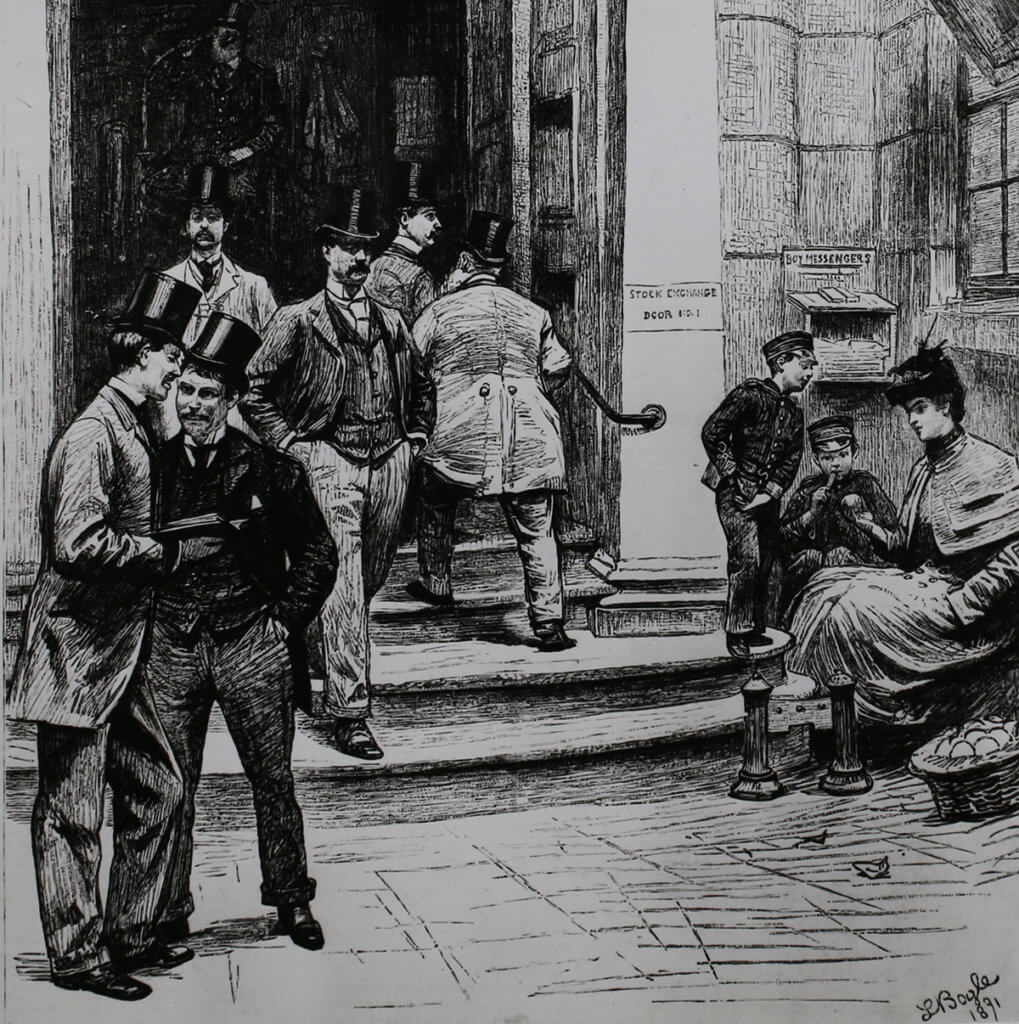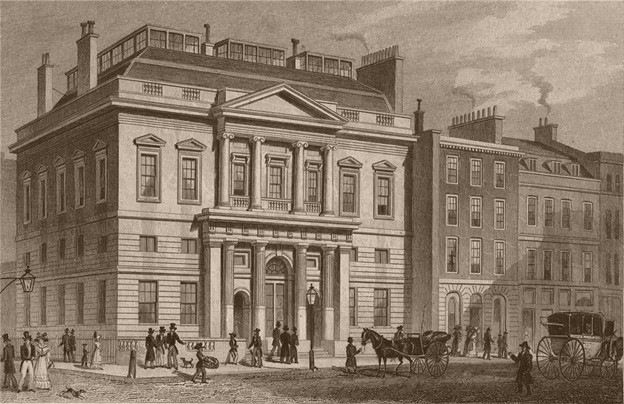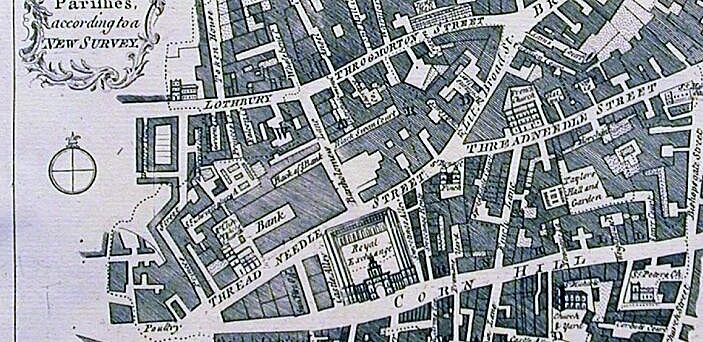There are two historic streets in the City of London which typically receive scant attention due to being overshadowed by the physically imposing and institutionally pre-eminent bulk of the Bank of England. To the north of the Bank, runs the greater portion of Lothbury and, to its east, Bartholomew Lane. Yet, these two streets have existed at least since the Middle Ages, have been the location of important institutions and to this day retain some historical buildings of note, quite aside from the Bank of England itself.

A view of the W portion of Lothbury from the intersection with Princes
Street and Moorgate
The first recorded mention of Lothbury is in the 1180s, as a suffix to the church of St Margaret Lothbury, at that location. As for many toponyms in the City, the origin of the name is uncertain and disputed. It most likely refers to a family originally in occupation of that site.
Until the 19th C., Lothbury joined Cateaton Street to Throgmorton Street. The former disappeared under the scheme that gave rise to Gresham Street, which today meets Lothbury near Coleman Street and Old Jewry. The other significant topographical change to Lothbury came from the widening of Princes Street and creation of the southern extension of Moorgate, also in the 19th C., which bisected Lothbury.
By the early 16th C., Lothbury was the location of many metal foundries. This is reflected by the presence of an alley, jutting northward from Lothbury, named Founders’ Court, which used to lead to the livery hall of the Worshipful Company of Founders. Also nearby is Tokenhouse Yard, named after a semi-official exchange where merchants’ tokens (privately-issued, small-denomination coinage) could be cashed in.
In the early 18th C., William Fuller founded a writing school in Lothbury, known as Mr Fuller’s academy. He later went into banking and at his death at the age of 95 was reputed one of the richest men in England, donating an estimated £ 60,000 (over £ 11 million, in today’s money) to various causes, notably nonconformist religious charities.
By the 19th C., industry and warehouses had been overtaken by offices. One such premise was the London office of the long-lived Anglo-American merchant baking firm of Brown Shipley, located in Founders’ Court in 1863. The current offices of that company (built in the 1970s) still occupy that site, though with the entrance on Moorgate, around the corner. The influential General Credit & Finance Co., one of the major, early limited-liability discount companies, built offices at 7 Lothbury in 1866. Despite the many changes in the company’s fortunes, the attractive Neo-Gothic building remains.
Another prominent name based here in the 19th C. was that of Erlanger & Co., a Franco-English firm specialising in sovereign and later corporate debt origination. They moved their headquarters to Lothbury in 1870, marking a shift in emphasis from their French roots to a more British-centred company.
Bartholomew Lane is named after the church of St Bartholomew the Less (not to be confused with the one linked to St Barts Hospital) and sometimes known as St Bartholomew by the Exchange. The church, which had been rebuilt to Wren’s design after the Great Fire, was demolished to make way for the 1840s incarnation of the Royal Exchange and widening of Threadneedle Street. The entire west side of Bartholomew Lane consists of the eastern aspect of the Bank of England. The east side is also of historical and architectural interest, however.
From 1802 to 2004, the London Stock Exchange was housed in a warren of successive structures that were partly obscured by a carapace of external buildings along Bartholomew Lane and Threadneedle Street. The Stock Exchange was more readily visible from Throgmorton Street and Old Broad Street but its original address, and for many years the main entrance for members, was at Capel Court, a narrow alley that opens onto Bartholomew Lane.

Another prominent tenant on Bartholomew Lane was the Auction Mart, founded in 1808 at the corner of Bartholomew Lane and Throgmorton Street. Though many types of assets were sold off there, it was primarily associated with auctions of real property and is judged by some historians as having contributed to the modernisation and commodification (in the neutral sense) of property transactions. Old and New London (1878) sates that “Bartholomew Lane is associated with the memory of Mr. George Robins, one of the most eloquent auctioneers who ever wielded an ivory hammer. The Auction Mart stood opposite the Rotunda of the Bank. […] It is said that half the landed property in England had passed under his hammer.”

Classical buildings of interest (west to east)
- Northern Assurance (3-4 Lothbury)
- Bank Buildings (1 Lothbury)
- British Law Fire Insurance (5 Lothbury)
- Central Electric Telegraph Station (Founders Court)
- Royal Bank of Canada (6 Lothbury)
- St Margaret Lothbury
- London & Westminster Bank (41 Lothbury)
- Allied Assurance (1-4 Bartholomew Lane)
